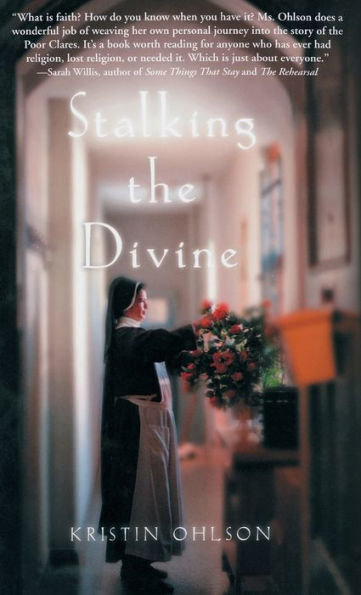

Hardcover(1ST)
-
PICK UP IN STORECheck Availability at Nearby Stores
Available within 2 business hours
Related collections and offers
Overview

Product Details
| ISBN-13: | 9781401300258 |
|---|---|
| Publisher: | Hachette Books |
| Publication date: | 08/06/2003 |
| Edition description: | 1ST |
| Pages: | 272 |
| Product dimensions: | 5.50(w) x 8.25(h) x (d) |
| Age Range: | 13 - 18 Years |
About the Author
Read an Excerpt
After my first month regularly attending mass at St. Paul, I called my sister out in California and told her that I was trying out church.
"Sure," she said. "You were always the holy one." Me? Me, the former radical communist atheist who'd taught her children to believe that belief in God is as fanciful as a belief in fairies but far more insidious? Me, whose children worried that my new interest in church might be evidence of an impending breakdown?
"Yes, you," my sister said. "We were laughing at your expense the other night. Mom and Dad pulled out a box of old photos and papers. There were a bunch of letters you wrote in second grade, going on and on about angels."
"The nuns made me do it!" I replied.
But yes, I remembered a few times in those early years when I'd felt rapturously happy in church. It was very much like the drifting-out-of-your-skin ecstasy that I later felt at political rallies, or when I was falling in love, or when holding my children in my arms. I wondered if I was going to church because I imagined this kind of heated exuberance could happen to me again. And did I even want to be that kind of believer?
After that first month, I began to recognize a few of the St. Paul regulars from a distance. Some of them looked well suited and stylish, as if they had just driven their SUVs in from the suburbs, while others looked broken and dusty, as if they'd spent the night sleeping under a bridge. There was the woman with foreboding eyebrows who always sat by the confessionals, the tweedy couple who whispered to each other throughout the service, the woman who always wore a ski hat, sneakers, and a cross the size of a potato masher around her neck. During the part of the mass when the congregants were supposed to turn and greet each other, some people had to stretch over empty pews to shake hands but the potato-masher-cross lady blew kisses at me instead. At the end of each mass, she often walked up to the front of the church and also blew kisses into the Poor Clares' enclosure.
I began to wonder what kept these faithful few coming to St. Paul Shrine and what fueled the aging cadre of priests who maintained this church. I found myself wanting to ambush them all in the church lobby and ask why these two-thousand-year-old stories meant so much to them, to demand that they explain how belief is even possible. I was especially intrigued by the Poor Clares. As I watched them disappear from view every Sunday, I wanted to drift behind them like vapor, swirling invisibly in their wake as they led a life so dedicated to -- to the pursuit of God? to the pleasures of God? I wanted to watch them as they sliced apples or searched for the cord to the curtains or swung their feet to the floor after a night full of dreams. Did all these ordinary moments have greater meaning because of their faith? Was their faith more powerful because it was compressed between the walls of their monastery? How had they converted from ordinary women to these hidden brides of Christ? I knew I couldn't vaporize, but still, I wanted to tag along with them like a little kid asking why, why, why?
And then I had an idea: I would write about them. They might be willing to take time from their mysterious lives if they knew I might use their words to create a book. I had interviewed enough people for magazine articles to know that sometimes questions aren't even necessary: often, people tell me things I wouldn't even think of asking. There's an odd, exhilarating intimacy that forms during an interview -- pleasantly safe intimacy, too, as I get to ask all the questions and it's very rare that someone tries to probe me. People who like to write generally do so because it gives them a way to explore and understand things, whether these things are out in the world, buried in the vault of their own memory, or have sprung unbidden from their imagination. In my case, writing about St. Paul Shrine might help me construct a framework for trying to make sense of their faith and, perhaps, learn to build some kind of faith of my own. I sent a letter to Father Senan and told him I wanted to write about St. Paul Shrine -- the building, the Poor Clares, the Franciscans, the congregation, the whole package. I acknowledged that much of my interest was personal, that I was a long-estranged Catholic with a wistfulness for faith. I told him that I wanted to discover what there was to learn about faith from those who had never left it in the first place, that I wanted to explore whether someone who had walked away from belief might find it again. And I told him that I thought there were many people like me.
Copyright 2003 Kristin Ohlson
